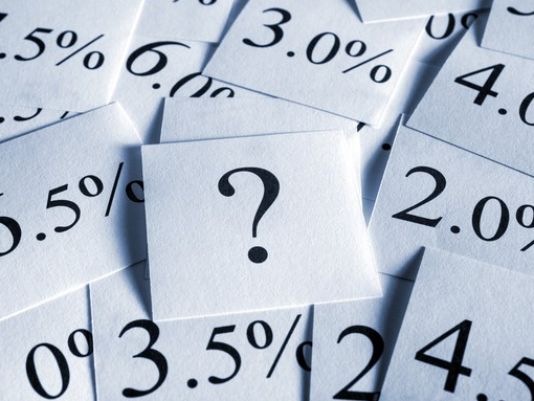
 Investors are fearfully watching for signs that inflation is picking up. Stocks tumbled in February when Wall Street thought a big increase was coming, and since then, stocks have rallied when the market received signs that inflation was in check.
Investors are fearfully watching for signs that inflation is picking up. Stocks tumbled in February when Wall Street thought a big increase was coming, and since then, stocks have rallied when the market received signs that inflation was in check.
Most experts agree that inflation is going to speed up eventually as the economy expands, and that the Federal Reserve will keep raising interest rates in order to keep inflation pressures from getting out of control.
Ownership of a bond is the ownership of a stream of future cash payments. Those cash payments are usually made in the form of periodic interest payments and the return of principal when the bond matures. In the absence of credit risk the value of that stream of future cash payments is simply a function of your required return based on your inflation expectations. In this section we’ll break down bond pricing, define the term “bond yield” and demonstrate how inflation expectations and interest rates determine the value of a bond.
The goal is to figure out where inflation is going within the context of Fed policy. The underlying data is that inflation is increasing toward the Fed’s target of 2 percent. The improvement in inflation is going to give the Fed confidence that it can remove much of the emergency accommodation it afforded following the global financial crisis. One ignores the Fed and Fed policy at one’s own peril.
 Since February, the market is beginning to process the policy positions of a Powell Fed, which is looking at an improving economy, improved labor markets, and inflation that they feel is on target. As we all know, it’s not inflation, it’s inflation expectations which are important, and the Fed wants an environment where inflation expectations are anchored at that 2 percent range.
Since February, the market is beginning to process the policy positions of a Powell Fed, which is looking at an improving economy, improved labor markets, and inflation that they feel is on target. As we all know, it’s not inflation, it’s inflation expectations which are important, and the Fed wants an environment where inflation expectations are anchored at that 2 percent range.
To understand how interest rates affect a bond’s price, you must understand the concept of yield. While there are several different types of yield calculations, for the purposes of this article we will use the yield-to-maturity (YTM) calculation. A bond’s YTM is simply the discount rate that can be used to make the present value of all of a bond’s cash flows equal to its price. In other words, a bond’s price is the sum of the present value of each cash flow where the present value of each cash flow is calculated using the same discount factor. This discount factor is the yield. When a bond’s yield rises, by definition, its price falls, and when a bond’s yield falls, by definition, its price increases.
Central banks do not control long-term interest rates. Market forces (supply and demand) determine equilibrium pricing for long-term bonds, which set long-term interest rates. If the bond market believes that the FOMC has set the fed funds rate too low, expectations of future inflation increase, which means long-term interest rates increase relative to short-term interest rates – the yield curve gets steeper. If the market believes that the FOMC has set the fed funds rate too high, the opposite happens, and long-term interest rates decrease relative to short-term interest rates, flattening the yield curve. (Whenever you hear the latest inflation update on the news, chances are that interest rates are mentioned in the same breath.
In the U.S., we see an economic cycle which is aging, earnings are going to look excellent this year but again aging, and a Federal Reserve that has made clear that they will follow a disciplined path to pursue rate hikes and remove accommodation. It’s an opportunity for a U.S. dollar-based investor to balance into other parts of the world that are in a younger economic cycle.
We’ve been telling U.S. dollar-based investors that the last several quarters have been an opportunity for them to rebalance globally, for example in Europe. Europe has a younger economic cycle, valuations are attractive relative to the U.S., and the European Central Bank is still in an accommodative, easing policy cycle. After a very strong nine-year bull market in the U.S. equity space, they can rebalance that in a global and multi-asset portfolio.

